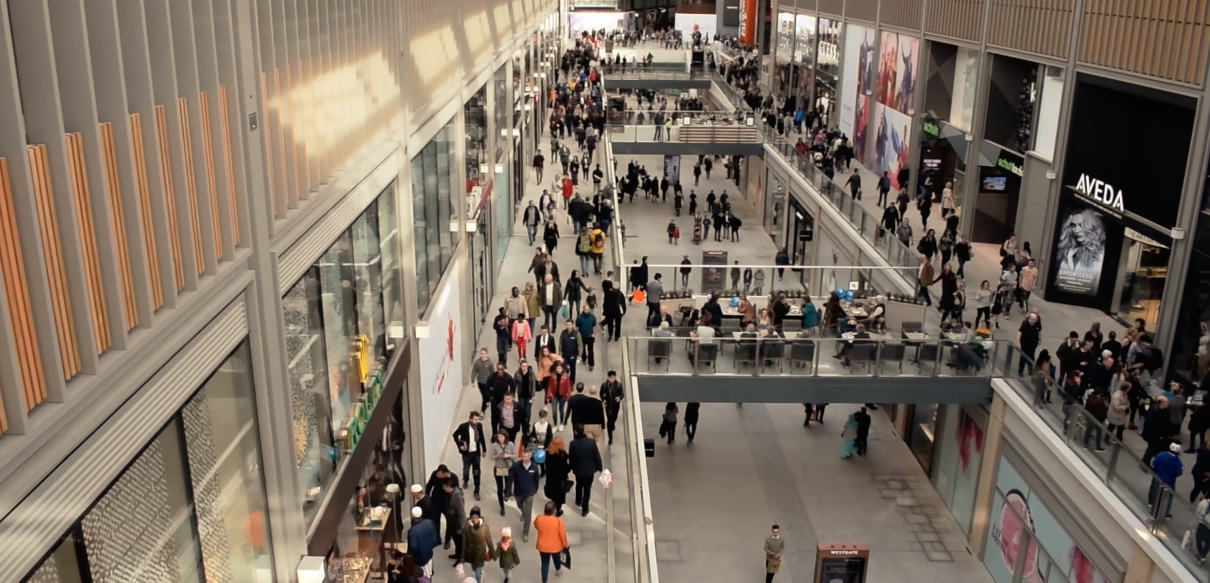Shoppers have flocked back to the Westgate centre in Oxford following the reopening of retail.
Centre director Brendan Hattam has told Thames Tap numbers coming into the centre in the first weeks of reopening have been up on the comparable week in 2019 and exceeded expectations although he expects a truer picture to emerge later.
And the April 12 reopening revealed an instant demand for socialising.
Mr Hattam said: “We’ve been open two weeks and visitor numbers are comfortably up on two years ago. After every lockdown return there’s a period for the first couple of weeks before a truer picture emerges, but so far it suggests a strong appetite for people to come out.
“We have over 20 restaurants here and we have noticed food and beverage (F&B) is particularly busy, even though we have just got outdoor trading at the moment until the 17th of May.
“But it (F&B) has been particularly popular – it was from the first morning, both breakfast and 12pm – 4pm, both have been consistent. It seems to be that people want to meet people again.
“We see people meeting up, even just having coffee or having a proper meal. It’s all very relaxed as well although we’ve had large numbers. It’s been a relaxed rather than a frantic atmosphere.”
The centre, which opened in 2017, already had some systems to help tenants before Covid struck including modern lease arrangements like turnover rents. In addition, landlord Landsec has supported its tenants nationally through an £80 million relief fund which has underpinned business for many during lockdown.
Mr Hattam added: “On top of that we’ve had lots of discussions on flexibility with our tenants, or brand partners as we like to call them, to understand them and come up with a mutual solution. That wouldn’t have happened in the past.”
As well as some essential stores remaining open throughout the pandemic, the Westgate has seen a number, which had to close during lockdown, fulfilling online orders from the shop premises in the same way that supermarkets often do, a trend Mr Hattam expects to continue.
Since the reopening, strong demand has been seen for beauty and cosmetics and in fashion where clothes, such as suits, need to be tried on.
Mr Hattam said: “With that type of merchandise, a lot of people want to experiment and it’s useful to do that in person with somebody to help you. It’s that horrible word ‘experiential’. People do want to try on something like a suit. You can’t create that online.”
Despite the turmoil in the retail market, Oxford has benefits few locations can match. In normal times the city attracts nine million tourists a year (out of 27 million across the county) and has 32,000 students who cluster around the centre.
Mr Hattam says while relying on more than one market is an advantage, it makes comparisons with regenerated towns difficult.
But the changing environment has brought about the same challenges other centres face to the tenant mix and how the business model is structured.
Mr Hattam said: “The traditional model of 10 years ago or longer is we would have been talking about a classic shopping centre with a department store at each end – the dumbbell as we called it.
“That’s the old model now. Now we have a situation that is more complicated. Now you can have other stores that are anchors in their own right. You can almost call the F&B an anchor at a different time of day.
“For example, shops used to close at 6pm. Now we are an 18-hour shopping centre or an 18-hour destination.
“You’ve also got the leisure so we have a cinema that will eventually re-open and we’ve got the Escape Hunt and Junkyard Golf, so that can be its own anchor. Then we have the traditional anchor which is John Lewis.
“But brands like Zara, Primark, Urban Outfitters, Uniqlo can all be anchors. Once upon a time it would have just been the department stores. We’ve had to evolve like that, even more so because we’ve seen department store closure (elsewhere in the city).”
Since reopening, the Westgate’s roof terrace, with views over the city and a range of restaurants serving (lockdown allowing) both indoors and out, has proved exceptionally popular while Westgate Social, a mix of leisure and F&B, has taken longer to establish than other areas of the centre.
But Mr Hattam says he expects it to become better established over time.
“When we opened the centre with 100-plus new brands at once – and when you’ve got John Lewis, the cinema and the roof terrace – it was easy for the Westgate Social to get drowned out by bigger stuff that was going on. It can take four to five years from when you open a new centre to establish everything.”
Changes are happening in close proximity to the Westgate. The nearby Clarendon Centre looks set to make way for offices and homes and Oxford has lost major department stores such as Boswells and will soon lose Debenhams. Momentum is building for Oxford’s West End development which will include the potential to rebuild and expand the station.
And changes continue within the centre. Mr Hattam says the fact the Westgate is still relatively new enables it to offer modern lease arrangements and to evolve within its surroundings. Its major brands sit alongside independent operators around the city such as those at the celebrated Covered Market. He says the Westgate’s position is to complement it.
“It’s all part of the offer Oxford has – it’s just different segments,” he said. He argues the future of centres needs to be one of continuing evolution.
He went on: “It’s always changing. When I was younger there was no such thing as Sunday shopping, they would close for two or three days at Christmas, they never opened on Bank Holidays, there were no restaurants – you might have had a café – but there was no leisure. It’s completely changed now and it’s always evolving.
“I think (in future) it will be more experiential because it will have to be. There will have to be more reasons to visit.
“There has to be more experiences to broaden the offer. I think centres will be open longer hours. We are open 18 hours a day and we have a gym that is open 24 hours a day. It’s about having multiple regional and national offers rather than just being a traditional shopping mall.
“The trend is for stores to be more like showrooms and to do what we call showrooming so you have the store to show the range.
“That’s becoming more and more accepted in our world, fulfilment from stores is growing and then you have that social experience and events, particularly with community events. It’s all part of the mix.”
Image shows the centre on opening day in 2017.
© Thames Tap (powered by ukpropertyforums.com).
Sign up to receive your free weekly Thames Tap newsletter here.















